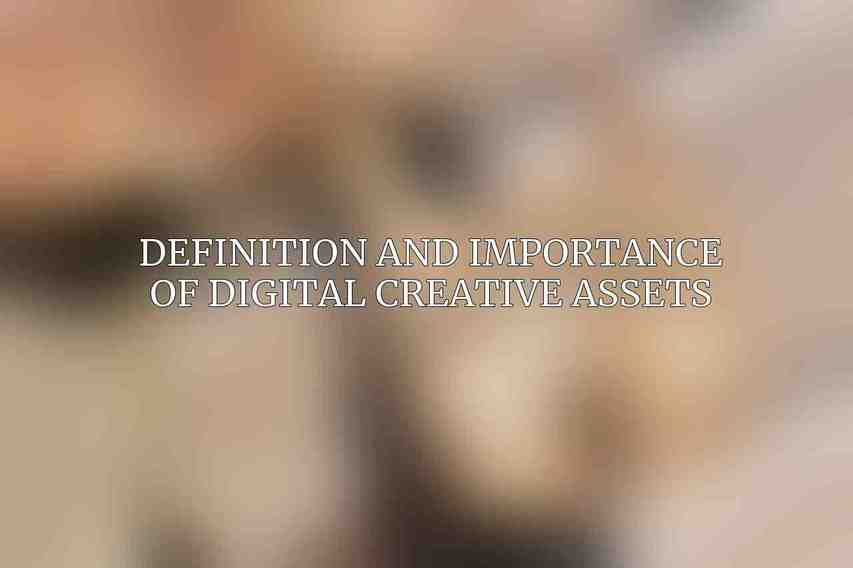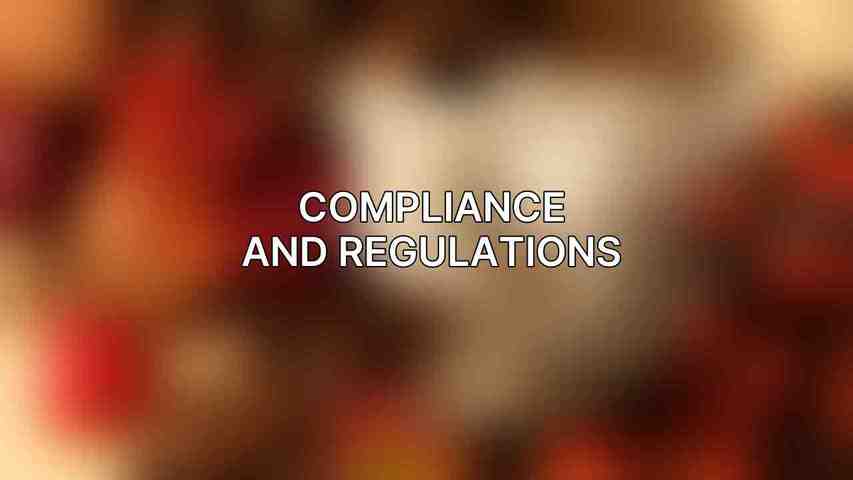Creative assets play a crucial role in various industries, from marketing and design to entertainment and media. Digital creative assets encompass a wide range of digital content such as images, videos, audio files, designs, and more, that hold significant value for individuals and businesses alike. Protecting these assets from threats is paramount to ensure their integrity, confidentiality, and availability.
Definition and Importance of Digital Creative Assets

Digital creative assets refer to any digital content that is uniquely created and has value to its creators or owners. This can include graphics, documents, multimedia files, and any other content that is essential for business operations, branding, or intellectual property. These assets are often a representation of a company’s brand identity or a creator’s work, making them invaluable and worth protecting.
Threats to Digital Asset Security
With the increasing reliance on digital platforms and storage, the risks associated with digital asset security have also risen. Common threats include hacking, data breaches, unauthorized access, insider threats, malware, and ransomware attacks. These threats can result in loss of sensitive information, intellectual property theft, reputational damage, and financial loss for individuals and organizations.
Best Practices for Digital Asset Security
When it comes to safeguarding digital creative assets, implementing robust security measures is imperative. Here are some best practices to enhance digital asset security:
Access Control
Effective access control mechanisms ensure that only authorized individuals have access to digital assets, minimizing the risk of unauthorized exposure or tampering.
Authentication and Authorization: Utilize strong authentication methods such as multi-factor authentication (MFA) to verify user identities before granting access. Authorization protocols should define access levels based on roles and responsibilities.
Password Management: Enforce password policies that encourage strong, unique passwords and regular password changes to prevent unauthorized access. Consider implementing password management tools for secure storage.
Role-Based Access Control: Implement role-based access control (RBAC) to restrict access to digital assets based on job functions and responsibilities, ensuring that users only have access to the assets necessary to perform their tasks.
Data Protection
Protecting the integrity and confidentiality of digital assets is paramount to prevent data loss or unauthorized exposure.
Encryption: Utilize encryption techniques to secure data both in transit and at rest, ensuring that even if data is intercepted, it remains unreadable to unauthorized users.
Data Loss Prevention: Implement data loss prevention (DLP) solutions to monitor and control data transfers, preventing sensitive information from being leaked or shared outside authorized channels.
Backups and Disaster Recovery: Regularly backup digital assets and create disaster recovery plans to mitigate the impact of data loss due to accidental deletion, cyberattacks, or system failures.
Asset Management
Efficient management of digital assets involves organizing, tracking, and controlling access to assets throughout their lifecycle.
Digital Rights Management: Implement digital rights management (DRM) solutions to control how digital assets are accessed, used, and shared, protecting intellectual property rights and licensing agreements.
Version Control: Maintain version control of digital assets to track changes, revisions, and updates, ensuring that the most current and authorized versions are being used.
Metadata Management: Utilize metadata to provide context and information about digital assets, simplifying search, retrieval, and organization of assets while enhancing security and compliance.
Cloud Security
As more organizations adopt cloud services for storing and managing digital assets, ensuring cloud security is essential to protect data from unauthorized access or exposure.
Cloud Service Provider Selection: Choose reputable cloud service providers that adhere to robust security standards and compliance regulations, ensuring that data stored in the cloud is secure.
Cloud Access Management: Implement secure access controls and policies to manage user permissions and activities within cloud environments, preventing unauthorized access or data breaches.
Cloud Data Protection: Employ encryption, access controls, and monitoring mechanisms to secure data stored in the cloud, protecting it from cyber threats and vulnerabilities.
Third-Party Access
Collaboration often requires sharing digital assets with external partners or vendors, necessitating proper controls and oversight to protect assets.
Vendor Risk Assessment: Conduct due diligence on third-party vendors to assess their security posture, adherence to security practices, and potential risks associated with sharing digital assets.
Contractual Agreements: Establish clear contractual agreements that outline data handling, access rights, confidentiality obligations, and liability provisions when sharing digital assets with third parties.
Monitoring and Auditing: Regularly monitor and audit third-party access to digital assets to ensure compliance with agreements, detect anomalous activities, and prevent unauthorized sharing or misuse of assets.
By following these best practices, individuals and organizations can strengthen the security posture of their digital creative assets and mitigate the risks of data breaches, intellectual property theft, and unauthorized access.
Advanced Security Measures
In addition to fundamental security practices, incorporating advanced security measures can further enhance the protection of digital creative assets:
Watermarking and Fingerprinting
Watermarking and fingerprinting techniques embed unique identifiers into digital assets, enabling creators to track and identify unauthorized use or distribution of their content.
Digital Rights Management (DRM) Systems
DRM systems provide comprehensive controls over how digital assets are accessed, distributed, and used, protecting intellectual property rights and enforcing usage restrictions.
Forensic Analysis and Incident Response
Forensic analysis techniques can be employed to investigate the source of the breach, gather evidence, and respond effectively to mitigate the impact.
Blockchain and Distributed Ledger Technology
Blockchain technology offers decentralized and secure storage capabilities for digital assets, ensuring transparency, immutability, and traceability of asset transactions and ownership.
Ensuring the resilience and protection of valuable creative assets.
Compliance and Regulations

Compliance with data protection and privacy regulations is essential to avoid legal consequences and protect individuals’ rights:
General Data Protection Regulation (GDPR)
The GDPR sets guidelines for the collection, processing, and storage of personal data, imposing strict requirements on organizations to ensure data protection and privacy compliance.
California Consumer Privacy Act (CCPA)
The CCPA mandates consumer data privacy rights, requiring businesses to disclose data practices, provide opt-out mechanisms, and safeguard personal information from unauthorized access or disclosure.
Digital Millennium Copyright Act (DMCA)
The DMCA establishes copyright laws and provisions for digital content, offering protection against online piracy, copyright infringement, and misappropriation of digital creative assets.
Adhering to these regulations and implementing necessary security measures can help organizations safeguard digital assets, maintain regulatory compliance, and protect individuals’ privacy rights.
Incident Response Plan
Having a well-defined incident response plan is crucial to minimize damage and respond effectively:
Detection and Response
Promptly detect and identify security incidents through monitoring tools and alert systems, enabling quick response and mitigation actions.
Containment and Isolation
Isolate affected systems or assets to prevent further spread of the breach, contain the impact, and protect unaffected digital assets.
Communication and Coordination
Establish clear communication channels, notify relevant stakeholders, and coordinate response efforts internally and externally to address the incident effectively.
Investigation and Remediation
Conduct thorough investigations, analyze root causes, implement remediation measures, and learn from incidents to enhance security measures and prevent future breaches. Dive deeper into How to Organize Digital Assets for Easy Team Access
A robust incident response plan ensures a proactive and efficient response to security events, minimizing the impact on digital assets and preserving their integrity.
Best Practices for Specific Types of Digital Creative Assets
Different types of digital creative assets require tailored security practices to address their unique characteristics and vulnerabilities:
Images
- Image Compression and Optimization: Reduce file sizes and optimize image quality without compromising security or visual integrity.
- Image Watermarking and Fingerprinting: Embed watermarks or fingerprints to deter unauthorized use and track image ownership.
- Metadata Management: Utilize metadata to describe image content, copyright information, and usage rights, enhancing asset organization and protection.
Videos
- Video Encryption and Transmission: Encrypt video content during transmission to prevent interception or unauthorized access.
- Video DRM Systems: Implement DRM systems to control video playback, distribution, and access rights, protecting against piracy and unauthorized sharing.
- Video Transcoding and Streaming: Securely transcode and stream videos using secure protocols to maintain quality and protect against manipulation.
Audio
- Audio Watermarking and Fingerprinting: Apply watermarks or fingerprints to audio files to uniquely identify and track their use and distribution.
- Audio Encryption and Delivery: Encrypt audio files during transmission or storage to prevent eavesdropping or unauthorized access.
- Metadata Management: Manage metadata for audio files to include information about artists, copyrights, genres, and usage rights, facilitating organization and protection.
By applying these best practices tailored to specific types of digital assets, individuals and organizations can enhance the security of their creative content and protect it from threats and unauthorized use.
Emerging Trends and Future Challenges
As technology evolves, new trends and challenges in digital asset security continue to emerge, shaping the future of data protection and asset management:
Artificial Intelligence and Machine Learning
AI and ML technologies play a vital role in enhancing security measures by automating threat detection, anomaly detection, and incident response to safeguard digital assets effectively.
Digital Asset Interoperability
Ensuring seamless interoperability and integration of digital assets across platforms, devices, and ecosystems is essential for efficient asset management and protection.
Blockchain and the Metaverse
The integration of blockchain technology in creating verifiable digital identities, ownership rights, and transactions within the metaverse presents opportunities and challenges for securing virtual assets and digital content.
As organizations navigate these emerging trends and tackle future challenges in digital asset security, staying abreast of technological advancements and adopting proactive security measures will be key to safeguarding valuable creative assets in the digital world.
securing digital creative assets through robust security practices, compliance with regulations, incident response preparedness, and tailored asset management strategies is essential to protect against threats and ensure the integrity and confidentiality of valuable digital content. By implementing best practices and staying informed about evolving trends and technologies, individuals and organizations can fortify the defense of their digital assets and preserve their creative endeavors in an increasingly digital world.
Frequently Asked Questions
What are digital creative assets?
Digital creative assets encompass any digital content created for the purpose of visual or auditory communication. This includes images, videos, graphics, audio files, designs, and more.
Why is it important to secure digital creative assets?
Securing digital creative assets is crucial to protect intellectual property rights, prevent unauthorized access or use, and maintain the integrity and value of your creative work.
What are some best practices for securing digital creative assets?
Some best practices include using strong passwords, encrypting files, regularly updating security software, restricting access to authorized personnel, and implementing backup and recovery solutions.
How can watermarking help secure digital creative assets?
Watermarking involves placing a visible or invisible mark on digital creative assets to deter unauthorized use or distribution. It can help identify the original creator and protect against plagiarism.
What should I do if my digital creative assets are stolen or compromised?
If your digital creative assets are stolen or compromised, you should immediately report the incident to the relevant authorities, document any evidence of theft or unauthorized use, and take steps to mitigate further damage by contacting legal counsel or cybersecurity experts.

